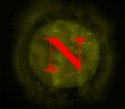 Ein Prosit, Ein Prosit, der Gemutlichkeit . . . Ein Prosit, Ein Prosit, der Gemutlichkeit . . . Eins, zwei, drei g'suffa! For those of us who have been to Oktoberfest in Munich, Germany, those words echo in our hearts and soul towards the end of every September. Its an experience that you never forget; the smells, the sights and camaraderie of people from all over the world coming together for the purpose of partying and drinking beer is just a sight to behold. The 175th Oktoberfest has already ended in Munich and their website is already counting down the time to the next one in September 2009. Their website also states that about 6 million people attended, drank 6.6 million steins of beer and “souvenir hunters tried to steal about 200,000 beer steins. Ahhh . . . the memories.
Ein Prosit, Ein Prosit, der Gemutlichkeit . . . Ein Prosit, Ein Prosit, der Gemutlichkeit . . . Eins, zwei, drei g'suffa! For those of us who have been to Oktoberfest in Munich, Germany, those words echo in our hearts and soul towards the end of every September. Its an experience that you never forget; the smells, the sights and camaraderie of people from all over the world coming together for the purpose of partying and drinking beer is just a sight to behold. The 175th Oktoberfest has already ended in Munich and their website is already counting down the time to the next one in September 2009. Their website also states that about 6 million people attended, drank 6.6 million steins of beer and “souvenir hunters tried to steal about 200,000 beer steins. Ahhh . . . the memories.While stationed in Germany with the U.S. Army, I was able to attend the Oktoberfest celebration every year for about 9 years. In addition to the official celebration, each city and town holds its own Oktoberfest celebration and I attended quite a bit of those too. As a result, I ended up with a pretty extensive collection of German beer steins and mugs of all shapes, sizes, designs and decoration. At one point I even had an antique cobalt blue lead crystal decanter with a pewter lid. It was probably the most beautiful of the steins that I owned. On a few occasions, I was able to purchase the beer steins that I had drank from, from the people running the beer tent. So not only did I have the most beautiful beer stein imaginable, but I also had the most plain, clear glass, run of the mill beer mug. One from Munich still sits on my desk to this day.
The word stein comes from the German steinzeukrug, which literally means a stoneware jug or tankard. The difference between a beer mug and a beer stein is that the stein has hinged lid. The lid was originally a sanitary measure taken after the times of the Bubonic Plague. The avid beer stein collector can tell you where a beer stein is made, where it came from, who made it and many other details just by glancing at the shape, design and decorations of the stein itself. Even something as innocuous as the design of the lid can give many clues about the origin of the stein. Beer steins can commemorate different cities and towns in Germany, wars, breweries, and history and they also can range in price from the a few dollars to thousands of dollars.
My collection of German beer steins has dwindled considerably in past years; I
 have given some away as gifts to family and friends, sold a few on eBay and antique shows, and have even broken a few on my many moves, but there are a few that are near and dear that I will never give up and will pass on to my sons. One in particular is stoneware beer stein with a hinged pewter lid with the name of the town of Grafenwöhr emblazoned on the front. This beer stein was given to me by my fellow soldiers and friends when I left Germany for the second time in 1991. Another is a short un-lidded stoneware beer mug that I purchased at Checkpoint Charlie in Berlin, Germany in 1981. Ahhhh the memories . . . Ein Prosit, Ein Prosit, der Gemutlichkeit . . . Ein Prosit, Ein Prosit, der Gemutlichkeit . . . Eins, zwei, drei g'suffa!
have given some away as gifts to family and friends, sold a few on eBay and antique shows, and have even broken a few on my many moves, but there are a few that are near and dear that I will never give up and will pass on to my sons. One in particular is stoneware beer stein with a hinged pewter lid with the name of the town of Grafenwöhr emblazoned on the front. This beer stein was given to me by my fellow soldiers and friends when I left Germany for the second time in 1991. Another is a short un-lidded stoneware beer mug that I purchased at Checkpoint Charlie in Berlin, Germany in 1981. Ahhhh the memories . . . Ein Prosit, Ein Prosit, der Gemutlichkeit . . . Ein Prosit, Ein Prosit, der Gemutlichkeit . . . Eins, zwei, drei g'suffa! 



